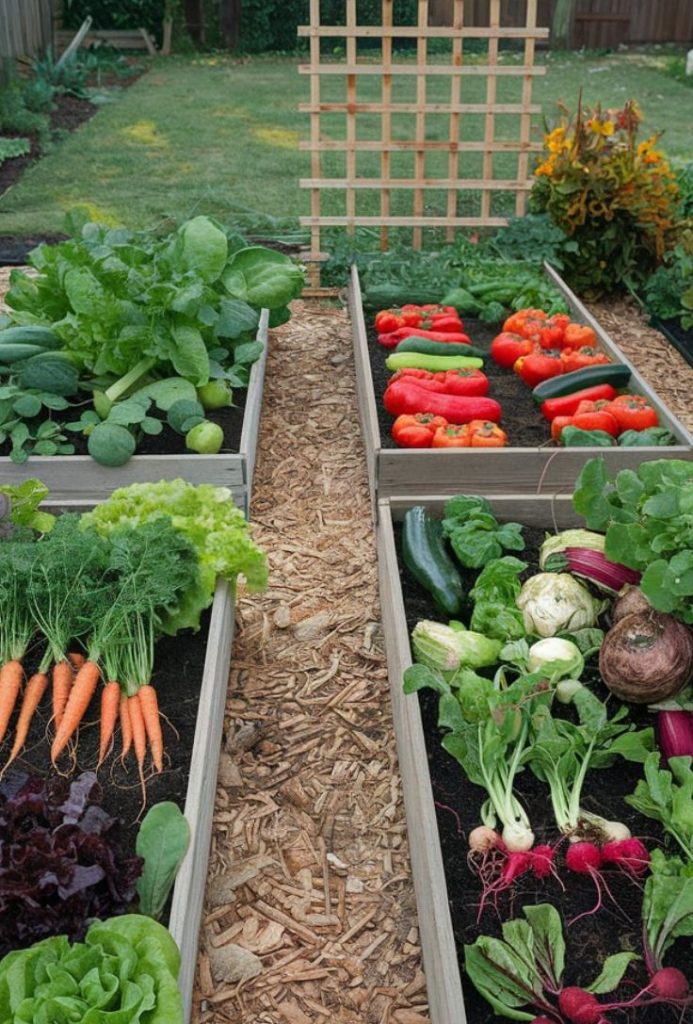Starting a backyard garden can feel like a daunting task, but it doesn’t have to be. With a little planning and a simple, step-by-step approach, even the most novice gardener can enjoy the satisfaction of growing their own fresh vegetables. Here’s a simple guide to get you started on your journey to a backyard food freedom green thumb.
Table of Contents
ToggleStep 1: Start Small and Find the Right Location
The biggest mistake a beginner can make is to take on too much at once. A small, manageable garden is more likely to be a success. A 4×4 or 4×8-foot raised bed is an excellent starting point. This size is easy to reach into, simple to maintain, and can produce a surprising amount of food.
Before you build or plant, you need to find the perfect spot. Most vegetables require at least 6-8 hours of direct sunlight each day. Observe your yard throughout the day to see where the sun hits most consistently. Choose a flat area that is also close to a water source, as lugging a hose across your lawn every day can quickly become a chore.
Step 2: Prepare Your Soil
You don’t need to be a soil expert, but you do need to understand that good soil is the key to a thriving garden. Most vegetables prefer soil that is rich in organic matter, well-draining, and has a neutral to slightly acidic pH (between 6.0 and 7.5).
For a raised bed, you have an advantage: you don’t need to use your existing backyard soil. Instead, you can create the perfect growing medium. A common and effective recipe is a “triple mix” composed of:
- 1/3 Topsoil: Provides a base of nutrients.
- 1/3 Compost: Adds essential organic matter and nutrients.
- 1/3 A mix of peat moss, coconut coir, or vermiculite: Improves drainage and aeration, which is crucial for healthy roots.
If you are planting directly in the ground, add a generous layer of compost and till it into the soil to improve its structure and nutrient content.
Step 3: Choose the Easiest Vegetables to Grow
To ensure a successful first season, pick vegetables that are known for being forgiving and easy to grow. These plants are often low-maintenance, resistant to pests, and provide a bountiful harvest.
Some of the best vegetables for beginners include:
- Lettuce and Spinach: These leafy greens grow quickly and can often be harvested multiple times. They also tolerate some shade, making them a great option for a less-than-perfect sunny spot.
- Radishes: A fast-growing root vegetable that can be ready to harvest in as little as three to four weeks.
- Green Beans: An excellent choice due to their carefree growth and low-maintenance requirements. Both bush and pole varieties are great for beginners.
- Zucchini: Zucchini plants are prolific producers, and a single plant can provide you with more than enough squash for a family.
- Carrots: These root vegetables are surprisingly easy to grow from seed, as long as you have loose, well-drained soil.
- Tomatoes: Cherry tomatoes are especially forgiving and a great way to start. Remember to give them plenty of sun and a tomato cage or trellis for support.
Step 4: Watering and Maintenance
Once your plants are in the ground, the work isn’t over. Consistency is key, especially when it comes to watering.
- Watering: New seeds and seedlings need consistently moist soil to get established. A soaker hose or drip irrigation system is a great way to provide a slow, steady supply of water directly to the roots without wasting water.
- Weeding: Weeds compete with your plants for water and nutrients, so it’s important to remove them regularly. A thin layer of mulch can also help suppress weeds and retain soil moisture.
Make it a habit to spend a few minutes in your garden each day. This allows you to catch problems like pests or diseases while they are still small and easy to manage.
Step 5: Enjoy Your Harvest!
The best part of backyard gardening is enjoying the delicious results of your labor. Harvest your vegetables as they ripen, and enjoy the unmatched flavor of fresh, homegrown produce. Don’t be afraid to try out new recipes and share your bounty with friends and family. A small garden can provide not only food but also a sense of accomplishment and a deeper connection to the food you.


